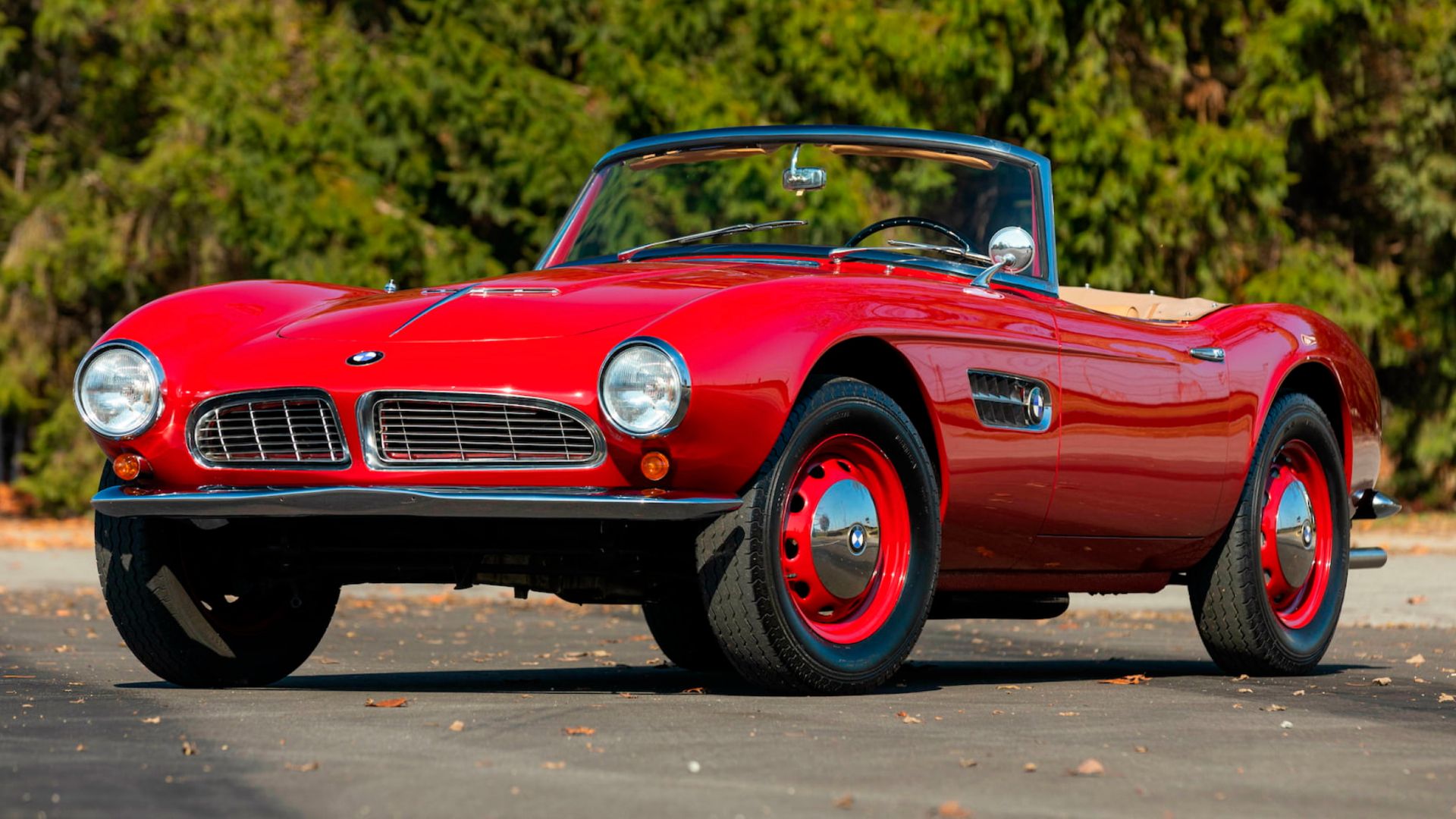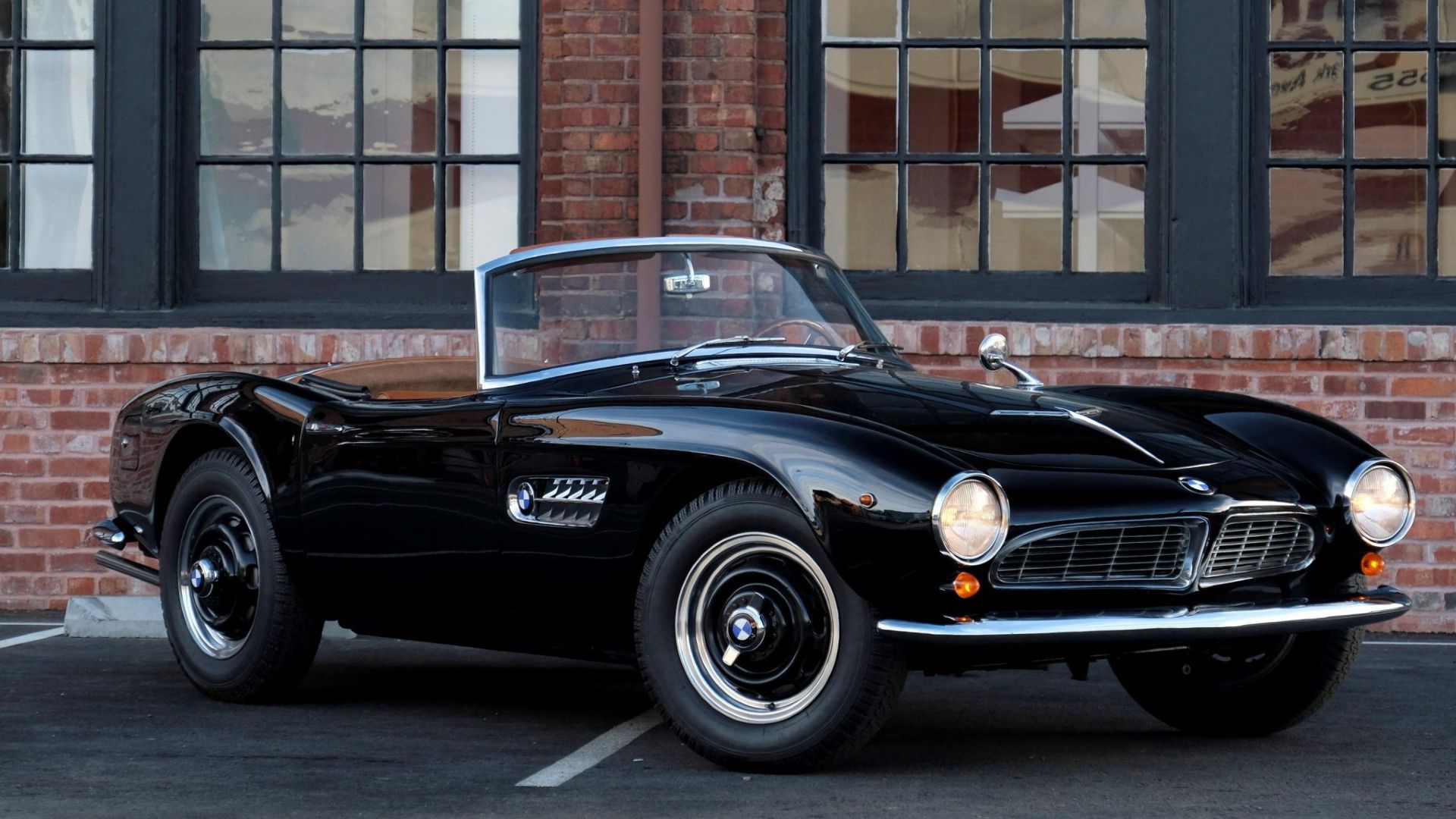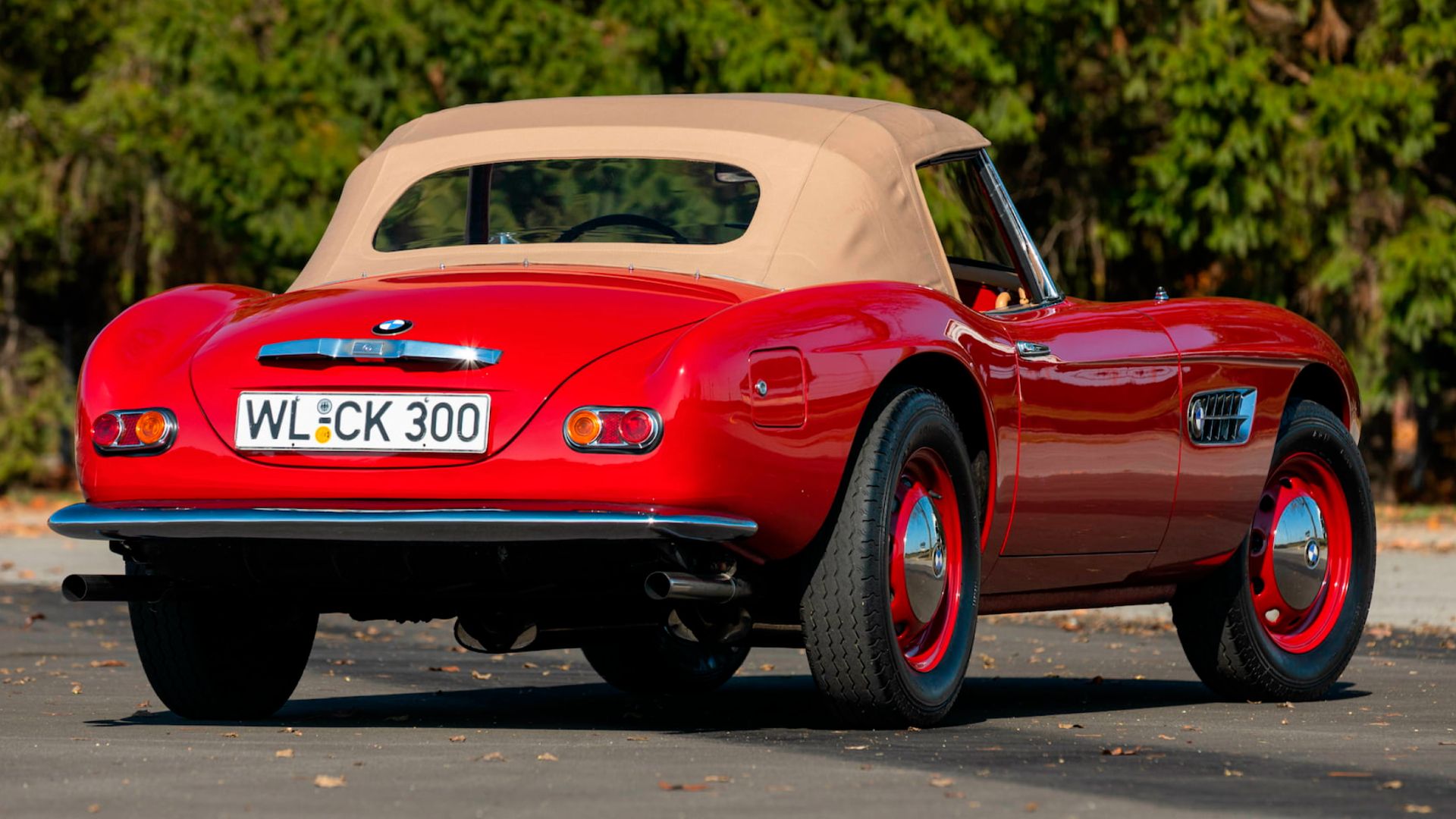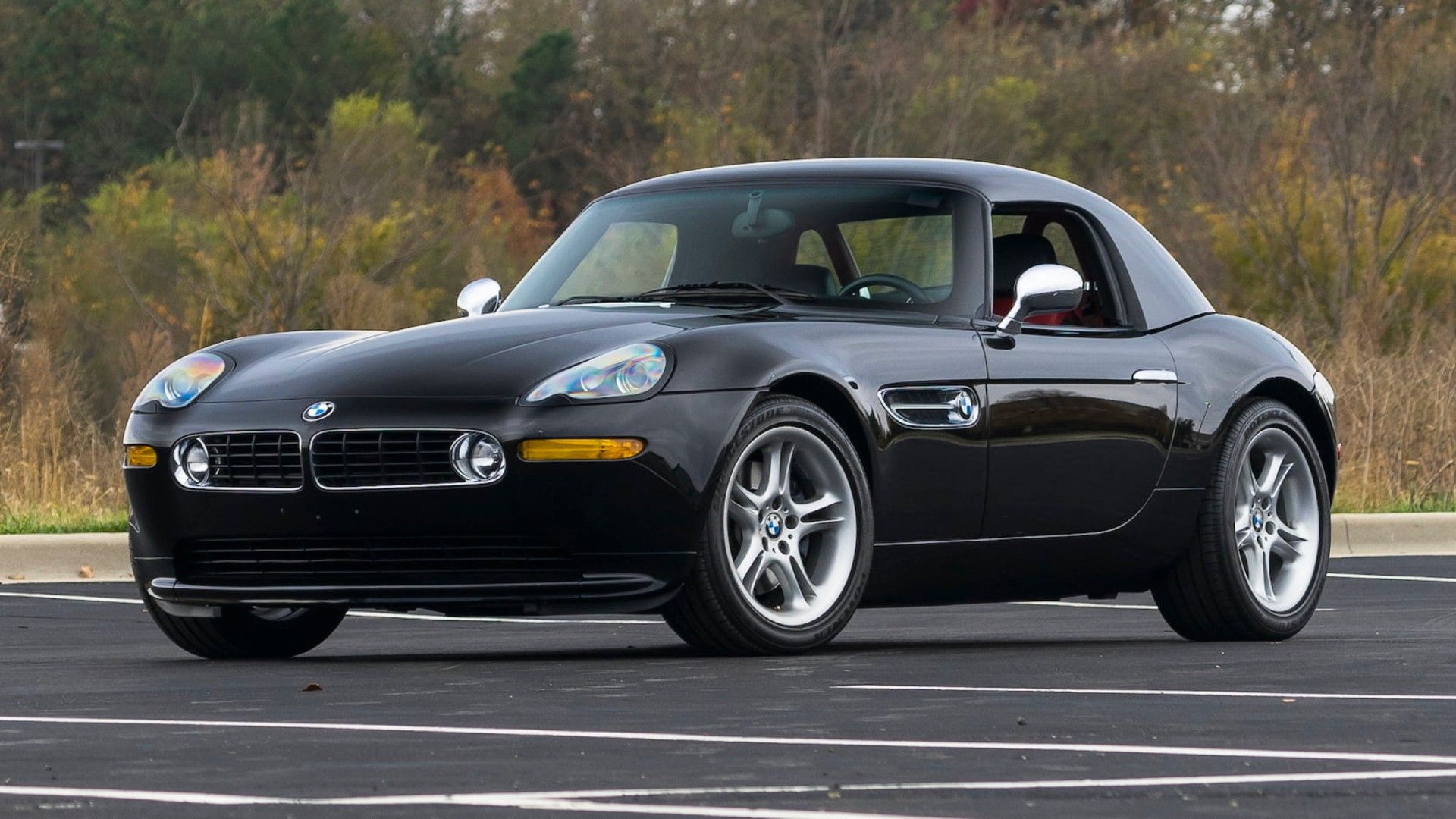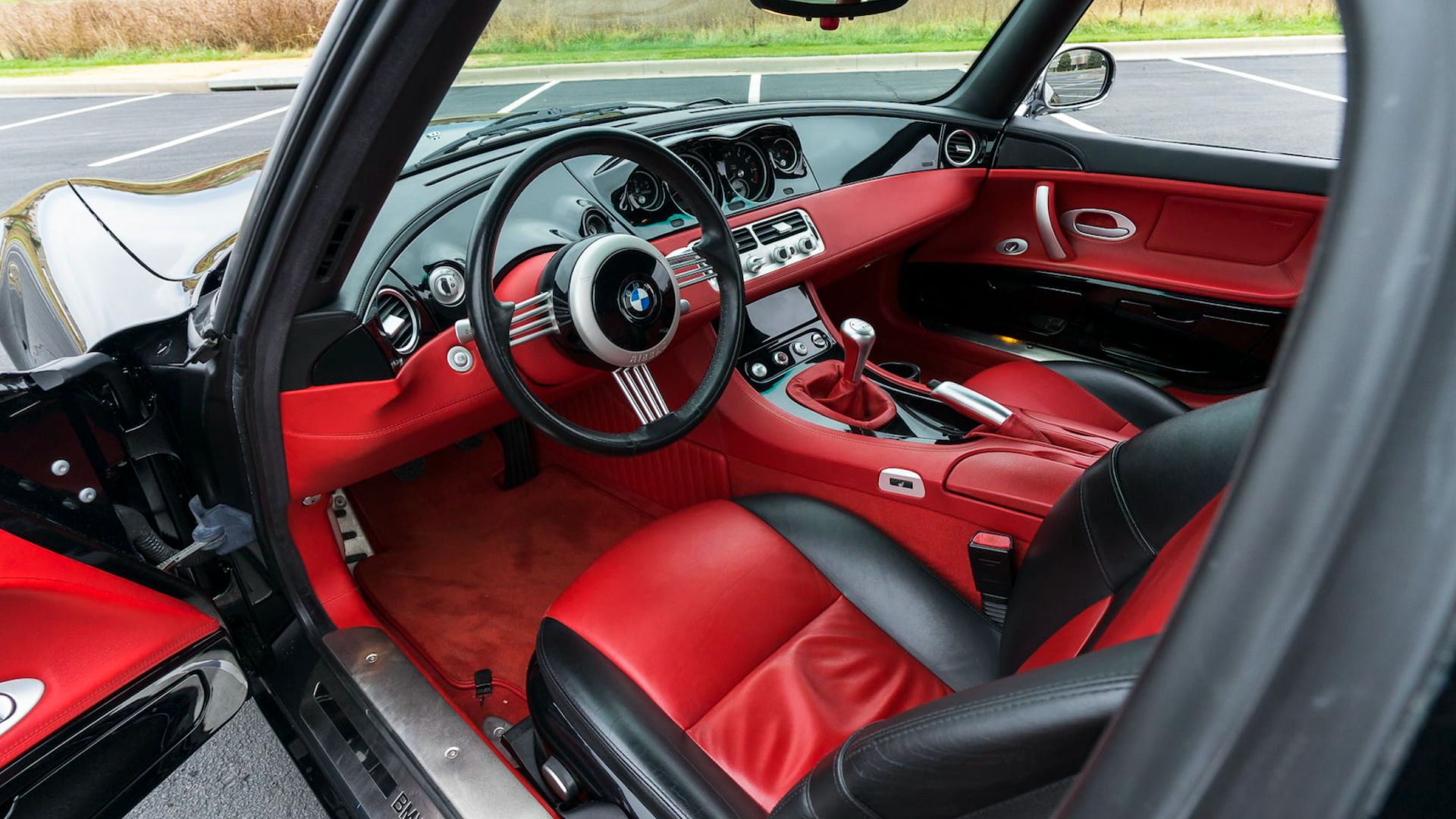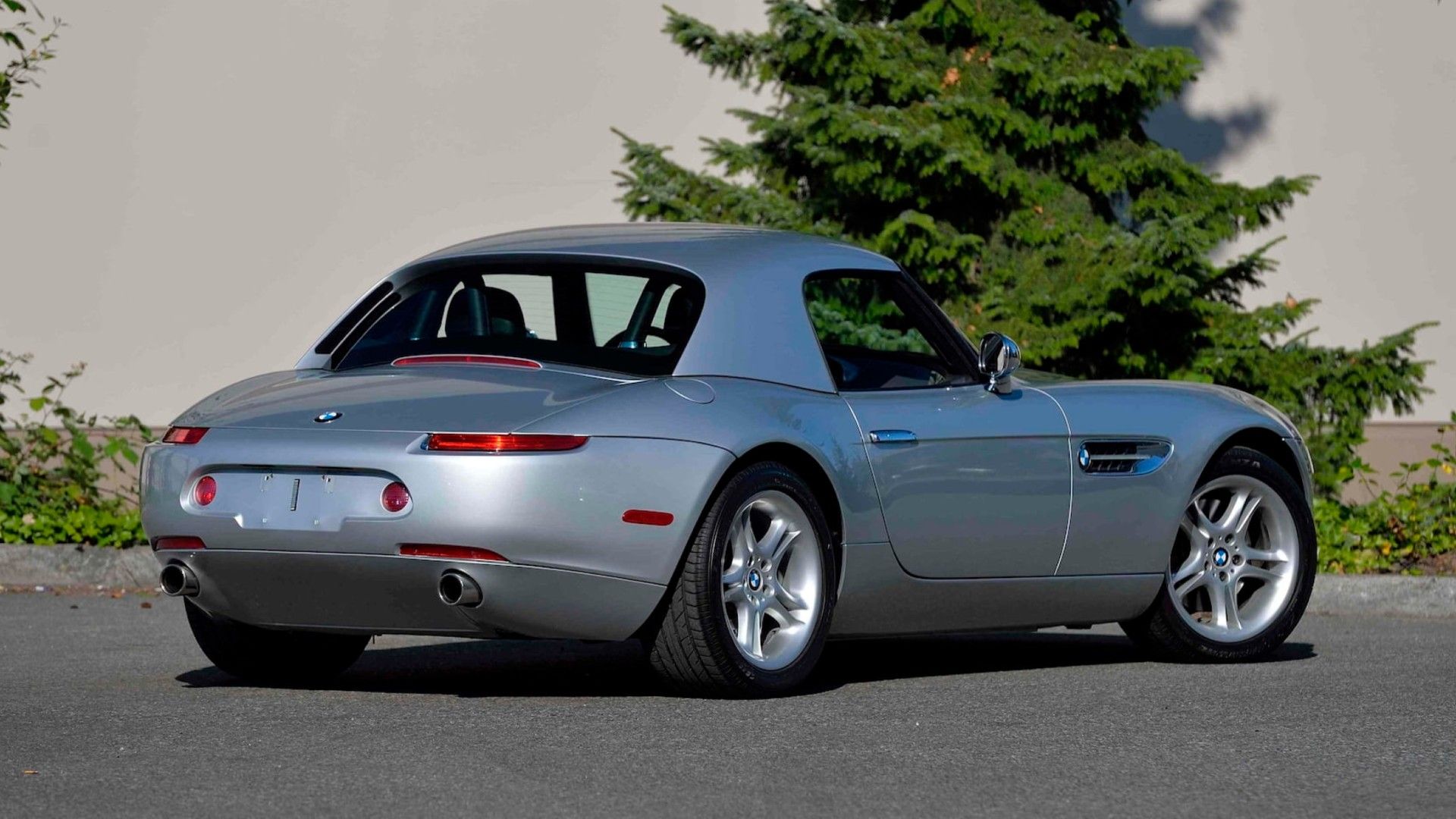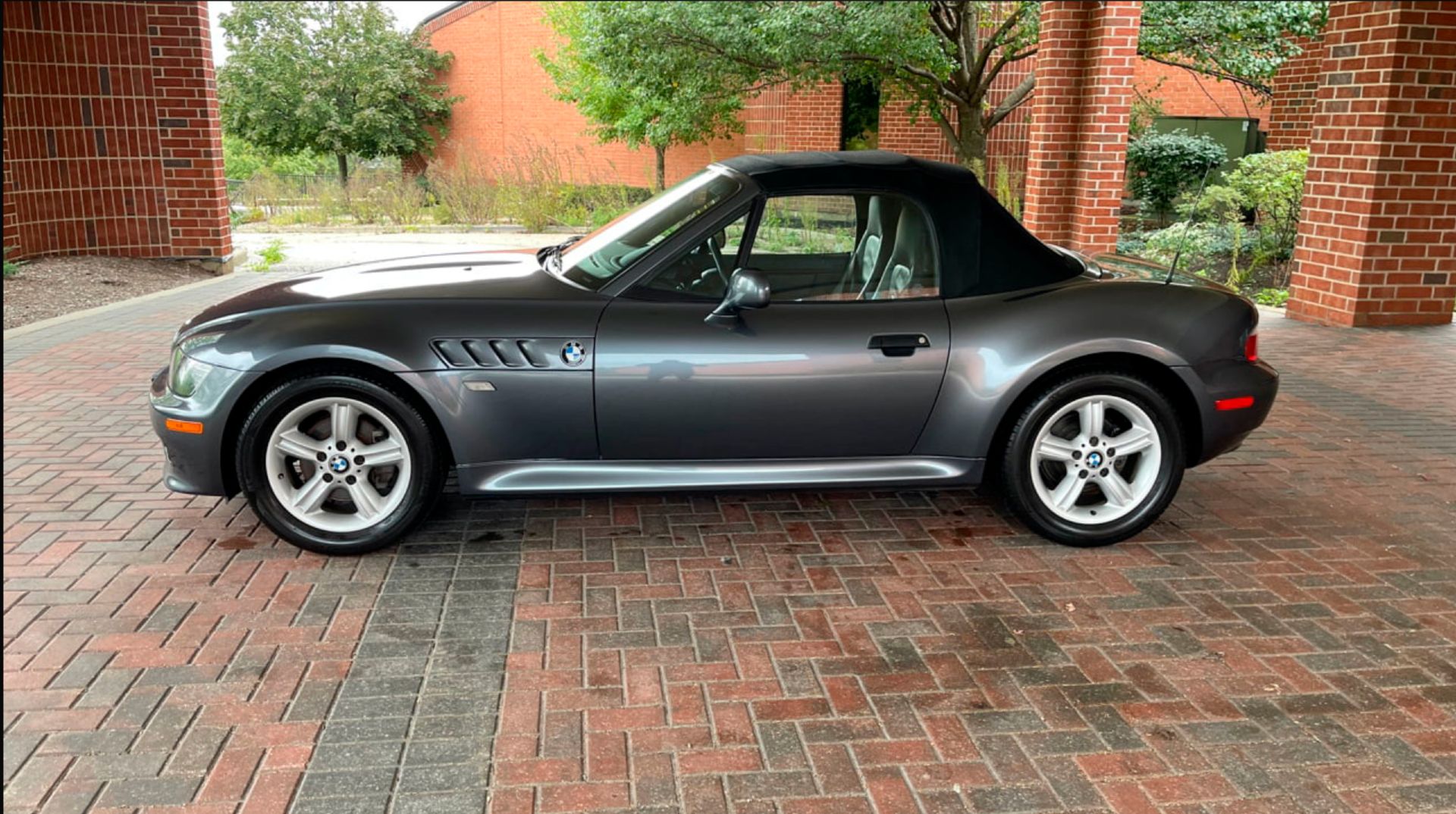BMW has a rich history when it comes to making skillfully engineered and highly technical automobiles, and its 106-year history is a testament to that. Even though most of its cars are classically handsome in a very German way, they do lack the flair that some of their Italian counterparts managed to bring to the table. In BMWs defense, it isn't for the lack of trying, but unfortunately, there seems to be a curse that bars its flagship and flamboyant droptops from sales success.
The Beautiful and Damned 507
Let's start with how the 507 nearly crippled BMW, even though it did so many things right. Max Hoffman, a U.S.-based importer who also played an instrumental role in the development of the 300 SL, convinced BMW to make a roadster that was aimed to be significantly cheaper than the Mercedes, which, at the time, was one of the most expensive production cars. Launched in 1956, the 507 featured a MIG-welded aluminum space frame that was completely handcrafted, based on a shortened version of the 503 Grand tourer's platform. Powered by the brand's first-ever V-8, displacing 3.2 liters with 150 horsepower and mated to a ZF-sourced four-speed transmission, this drop-top was capable of hitting 130 mph on a good day. BMW even offered eleven lucky customers the option of a detachable hardtop but never managed to stick with it due to the tricky financial situation.
The 507 Was A Favorite Among Celebrities
The biggest selling point for the 507 had to be its tantalizing looks that caught the fancy of several celebrities back in the day. Elvis Presley bought one in 1957 while stationed in Germany on duty with the U.S. Army, and later on, he even gifted one to co-star Ursula Andress. Former Formula 1 chief Bernie Ecclestone's 507 fetched £430,238 (approx. $904,000) at an auction in London in October 2007. Hollywood actor, John Derek, sold his to entertainer Fred Astaire. With such a heavy celebrity fan following, the 507 was bound to be a runaway success, but it wasn't, and many factors were responsible. Back in the day, aluminum was a cutting-edge material and very difficult to work with. Add to that the fact that each car was hand-built and no two cars were identical. This, along with war and other problems like the high production costs involved in making its bespoke engine, resulted in high production costs and pushed the price in Germany to DM 26,500 and then DM 29,950. This drove the U.S. price initially to $9,000 then ultimately $10,500 ($98,600 today). And, just to paint a picture, the 300 SL roadster, one of the most expensive cars at the time, came in at $11,000. Initially intended to reach a targeted production run of 5,000 copies, BMW had to cease production after just 252 examples were built to save them from bankruptcy.
History Repeats Itself - The Z8 chapter
The second phase of BMW's bad luck started with the Z07 concept that debuted at the 1997 Tokyo Auto Show as a precursor of things to come, and it showcased BMWs desire to revive the 507's legacy. The production version of this concept was unveiled within the next three years in the form of the BMW Z8. It took plenty of cues from the 507, including the distinctive elongated kidney grills, side vents, and its muscular engine that ditched BMW's typical high-revving nature and produced a throaty exhaust note. The Z8 was riddled with easter eggs taking it back to the 507's stunning design including the detachable hardtop.
The interior, for instance, was a minimalist dream that captured all the old-school charm such as the body-colored dash and the simple three-spoke steering wheel that looked like an art piece, and the attention to detail was paramount, as you would expect from a BMW flagship. The decluttered switchgear and the focus on minimalism made it stand out from the other cars of the day, though it might not have been in a good way. Even the buttons for mirrors and window controls were decluttered using a single joystick assembly whereas most other cars employed at least three separate buttons to do the same job. The first-gen nav sat behind a panel at the bottom of the dash near the center console, yet another old-school trick and something we appreciate now more than ever. There was also the beautiful analog instrumentation that looks like the work of a boutique watchmaker.
The Z8 Was Way Ahead Of Its Time
Simply put, the Z8 was way ahead of its time, and people of the late 90s and early 2000s wanted excess, not in a good way. A million buttons and small LED screens everywhere was the vision of the future and the Z8 was the exact opposite. If you look at how cars of the same time have aged in comparison, it was clear that BMW was way ahead of the curve, so much so that the people at the time weren't ready for it. Just like the 507, this was not a cheap BMW, courtesy of its all-aluminum monocoque and its 400 horsepower V-8 that it borrowed from the brilliant E39 M5 sports saloon. It came mated to a well-weighted five-speed manual gearbox as well. All of this came together to give it a top speed of 155 mph, however, delimited cars were capable of hitting 180 mph. With a 0-60 mph time of 4.2 seconds, it was plenty fast, but it wasn't exactly a poised sports car. It was a tail-happy brute despite its front mid-engine layout and that had to be muscled around, which was completely acceptable before you get the price into consideration.
At $128,000, the Z8 was not cheap and went on to compete with the likes of the Ferrari 360 Modena and Porsche 911 Turbo S convertible, cars that were nearly as fast but far easier to control at the limit. The combination of these factors meant sales figures never picked up the way BMW anticipated. In a bid to cater to the older demographic, which was the primary customer base for this expensive old-school roadster, BMW introduced a rebranded Alpina Roadster V-8 in 2003, after the BMW Z8 officially ended production in 2002. It featured a new 4.8-liter V-8 and an automatic transmission. But, even that wasn't enough, and by the end of its production run, just 5,703 Z8s were built, out of which 2,543 made it to the North American market.
The Z8 And 507 Have Become Collector's Items
The more affordable Z3 roadster and the Z4 that followed were comparatively more successful, but these cars were never intended to capture the full essence of the 507 like the Z8. Add to that the fact that both the Z3 and Z4 carried a fraction of the Z8's price tag and they were never intended to be as special as they, unfortunately, got lost among other excellent models offered by the Bavarian automaker. While the Z8 roadsters in the used car market sell between $180,000 to $200,000 for decent examples and show quality, low-mileage examples command upwards of $400,000, the 507 commands well over seven-digit figures, with some examples fetching north of $2 million.

